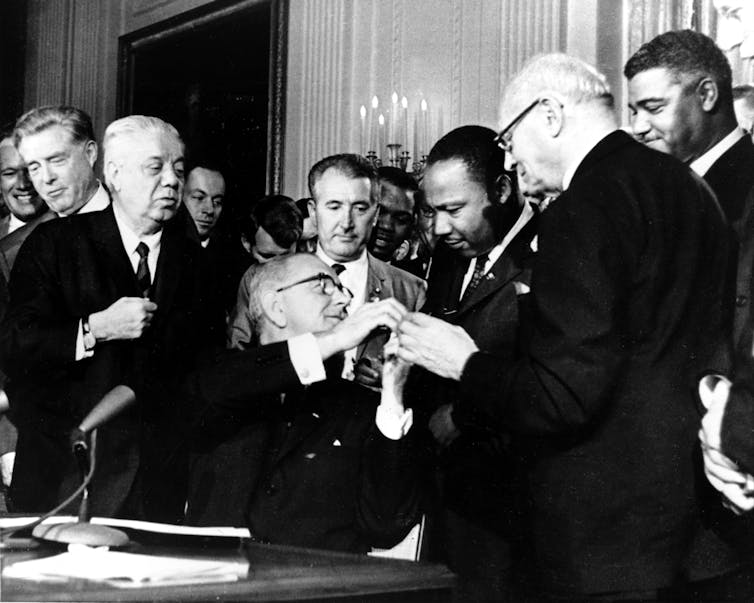How Sacramento City Unified got into financial crisis
How Sacramento City Unified got into financial crisis
(NOT A WORD ABOUT CORPORATE DARK MONEY AND THE IMPACT ON SAC CITY SCHOOLS)
RELATED: California: More Information About the Foxes Who Guard the Henhouse | Diane Ravitch's blog - https://wp.me/p2odLa-lTj via @dianeravitch
Sacramento City Unified School District is chipping away at expenses in a last-ditch effort to close its $35 million budget gap, but time is running out and a state takeover seems imminent.
The unprecedented rejection of the district’s budget in August by the Sacramento County Office of Education appeared to take many by surprise – but Sacramento City’s fiscal problems didn’t happen overnight.
Auditors have noted that sharp turn toward insolvency came on the heels of the 2017 labor contract between the district and teachers, which narrowly averted a strike. They said that deal combined with other factors, including a decade of financial missteps, leadership problems, labor strife and shrinking student enrollment, to take the district to the brink of disaster.
Here’s who is involved in the budget crisis, how the finances went off the rails, what the future might hold, and what it could mean for the district’s students and their families.
THE PLAYERS
Sacramento City Unified School District: The district is home to more than 42,000 students and 3,000 teachers in 81 schools. It’s the 11th-largest school district in California, with an annual budget of nearly $400 million.
Sacramento City Teachers Association: The SCTA is one of five unions in the district. Representing about 2,500 teachers, it’s the seventh-largest teachers union in California, according to its website. It is an affiliate of the California Teachers Association and the National Education Association. The union and the district are at odds over contract negotiations, with SCTA members currently voting whether to authorize a strike.
California Department of Education: If Sacramento City Unified determines it has become insolvent and needs an emergency loan to pay its bills, it will request one from the state Education Department. That request triggers a state takeover. The department has appointed a trustee for all previous state takeovers, including Oakland Unified in 2003 and Inglewood Unified in 2012. But that responsibility has shifted. Since the passage of Assembly Bill 1840, signed into law last year, the authority to appoint an administrator lies with the school district’s county superintendent.
Sacramento County Office of Education: The county education department, led by Sacramento County Superintendent of Schools Dave Gordon, has been monitoring Sacramento City Unified closely since it started showing signs of financial duress a decade ago. If the district requests a loan from the state, Gordon will assume all legal rights, duties and powers of the school board. He would then appoint an administrator.
Sacramento City Unified Superintendent Jorge Aguilar: Aguilar arrived after a long period of management turnover. The district had gone through six superintendents, some temporary, during the past 15 years.
When Aguilar joined the district in mid-2017, it had a $5-million budget surplus, but the relationship between the district and its teachers was poor.
A teachers strike was narrowly averted in November 2017 after more than a year of bitter contract negotiations. But labor tensions are again running high amid the financial turmoil.
Sacramento City Unified Board of Education: The board has eight members, including seven trustees elected by trustee area to four-year terms. The eighth member is a high school student selected to a one-year term by the Student Advisory Committee. The board is responsible for general district oversight, including hiring the superintendent. It approves or rejects the administration’s policy, budget and personnel decisions. If the district goes into state receivership, fiscal decisions will be taken out of its hands. The board selected Area 7 trustee Jessie Ryan as its president in 2017.
Sacramento Mayor Darrell Steinberg: Steinberg joined the budget wrangling that averted a teacher strike in 2017. He scribbled a back-of-the-napkin deal that included an 11 percent increase to teacher salaries – an agreement that the union says the district has walked away from.
FCMAT: The state-created Fiscal Crisis and Management Assistance Team provides financial advice, administrative help and training at the request of school districts and county offices of education. In December 2018, FCMAT presented an audit that warned Sacramento City Unified that if it failed to correct its budget deficit, it would face a state takeover in six months. The independent team faulted the district, which announced it would run out of money by November 2019.
California Legislature: Assemblyman Kevin McCarty, D-Sacramento, requested a state audit of the district, which was approved Wednesday by the Joint Committee on Legislative Audit. The audit is scheduled to begin on May 1. If the district requests an emergency loan, it must be appropriated by the state Legislature.
WHAT WENT WRONG?
In the last four fiscal years, between 2013 and 2017, Sacramento City Unified ran surpluses, according to its financial statements and FCMAT.
And then in 2017-18, the district suddenly ran a deficit of nearly $10 million. What caused the crisis?
Insufficient cuts: In April 2008, the county office of education changed Sacramento City Unified’s certification from positive to qualified because the district had not identified enough cuts, and some of the millions targeted still needed board approval.
In 2010, when Jonathan Raymond assumed the role of district superintendent, Gordon noted in a letter that some big-ticket items identified by the district for cuts – namely, furlough days and health benefits – required union negotiations.
“Our understanding is that formal negotiations have only just begun,” read Gordon’s letter. “The timeline is tight and there is little or no room for deadline modifications.”
The county’s Office of Education showed signs of faith in the district. In 2012, it concurred with the district’s qualified certification despite some reservations.
“Our decision to not downgrade the district budget to a negative certification was based on our reliance on the district’s implementation of its budget reduction plan,” read Gordon’s letter.
But the district took risks. Lots of them.
Cash flow estimates submitted by the district in 2012 showed that it would require $50 million in tax revenue anticipation notes – money that it didn’t have in hand, but that it expected from tax increases proposed by Gov. Jerry Brown. Gordon asked the district to prepare a contingency plan if the governor’s tax increases failed to materialize. Ultimately, the money did not come through, forcing the district to spend down millions of dollars from its general funds.
‘Leadership issues’: The December FCMAT audit
criticized Sacramento City Unified for past mismanagement, communication failures and inexperienced staff that contributed to its ongoing budget problems.
“It is a governance and leadership problem, period,” FCMAT CEO Mike Fine said when he delivered the audit. “And it’s many years of governance and leadership issues – not purely the last twelve months.”
The audit found that the district’s business team did not communicate enough with other departments, making it more difficult to solve fiscal problems. It also said the district’s staff underutilized software and lacked understanding of how to maintain and analyze data.
Salary agreement, continuing labor strife: While Sacramento City Unified traveled a long road into fiscal trouble, with many warning signs along the way, its finances took a precipitous turn after the district and teachers signed a new labor contract.
The deal was brokered by Steinberg, Aguilar and the union at the mayor’s Greenhaven house over a weekend in November 2017 as a strike loomed. It provided a 7.5 percent salary increase for teachers with an additional 3.5 percent adjustment to mid-range salaries.
At the time, it was lauded as balance between fiscal prudence and paying teachers fairly.
But independent auditors now say that while the salary increases weren’t solely to blame for Sacramento City’s fiscal woes, after the deal was signed, the district quickly slid toward insolvency.
























